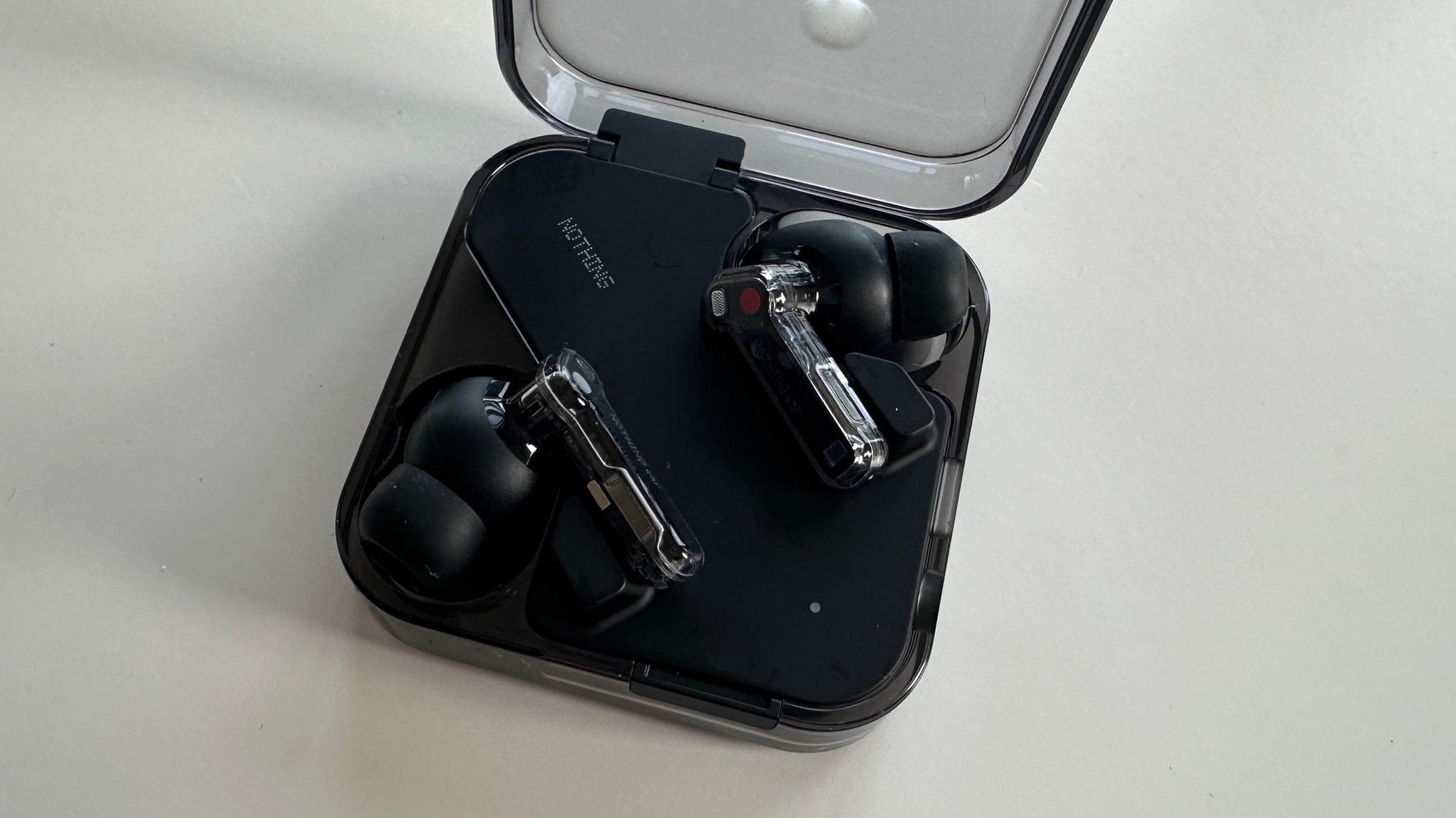Hisense 100L9GTUK Laser TV Review
Want a huge TV but can't afford one? Hisense's projector-based could be right up your street
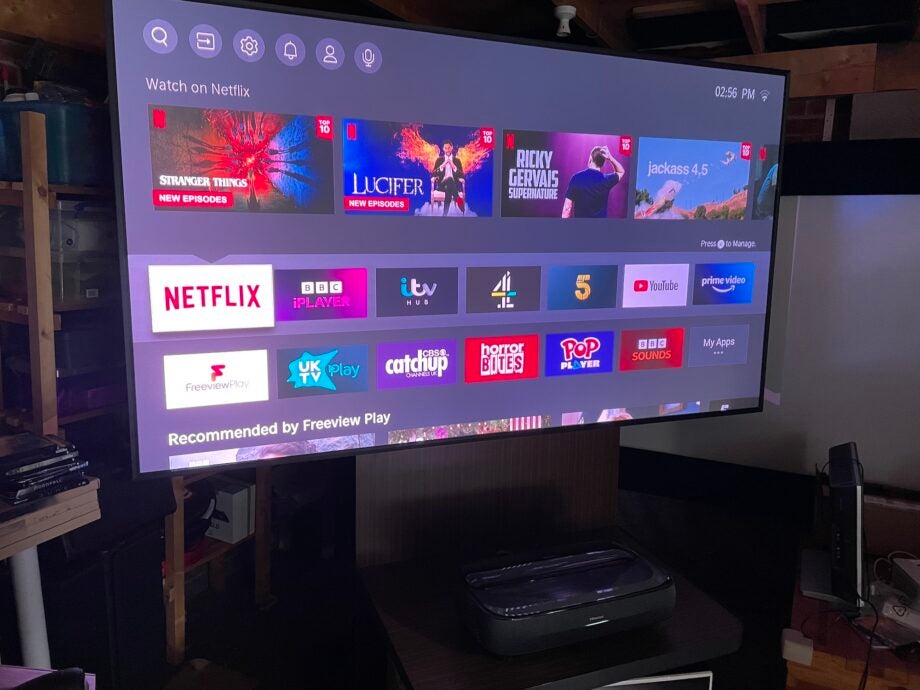

Verdict
It isn’t without compromise, but the 100L9GTUK really does feel more often like a TV than a projector, making it a potentially great value, big-screen option for the right customer.
Pros
- Startlingly bright pictures
- Vibrant colours
- Feels like watching TV
Cons
- Screen causes a hotspot
- Average black levels
- Limited viewing angles
Availability
- UKRRP: £3999
- USARRP: $5499
Key Features
- 100-inch 4K picturesDLP laser projector uses “double flashing” technology to deliver a claimed 4K resolution
- DLP Laser Projector sourceThree lasers avoid the need for a brightness/colour volume reducing colour wheel from the DLP optical system
- Ships with ambient light-rejecting screenA structure built into the solid screen’s surface stops ambient light from landing on the screen
- Hisense VIDAA smart systemThe same smart system found on most Hisense TVs
- Built-in 40W speaker system2 x 20W speakers that fire into a room
Introduction
AV fans who desperately want to create a big-screen experience at home, but who aren’t multi-millionaires, always end up facing the same tough choice.
Do they “make do” with a 75-85-inch TV, given that bigger TVs are as rare as hen’s teeth and cost tens of thousands of pounds even if you do manage to find one, or do they go for a much less convenient projector solution, so they can afford to extend their dream to screen sizes of 100 inches or more without having to sell a kidney?
Hisense, it seems, has noticed this quandary and decided to do something about it. The “something” being the 100L9GTUK Laser TV – a clever combination of an ultra-short throw laser projector and ambient light-rejecting screen designed to deliver the experience of a TV at the scale of a projector.
Can such a combi solution really deliver the best of both worlds, though, or will it ultimately be defined by compromise?
The Hisense 100L9GTUK is available from multiple retailers for £3999 in the UK, which works out pretty nicely on a pound-per-screen-inch basis when compared to the stratospheric prices typically commanded for models of TV 85 inches and above.
The 100L9GTUK is also available in the US – albeit with a slightly different spec in some areas – for $5499.
If you want to go even bigger than 100 inches, then in the UK you can pick up a 120-inch L9GTUK for an additional £500.
Making the price look even more attractive is the fact that, at the time of writing, Hisense will deliver and fully install the 100L9GTUK free of charge. This could take a few days or even weeks following purchase; but not having to mess about trying to hang the screen, spending potentially ages setting up the projector correctly yourself, makes the wait well worth it.
Design
- UST projector sits right up to the screen for a TV effect
- Solid, wall-hanging screen
- Speakers built into the projectors rear
To a stranger walking into a living room that’s home to a 100L9GTUK for the first time, it really does just look like a huge TV. The 100-inch rigid screen sits there on your wall, blasting startlingly bright pictures off its solid, ambient light-rejecting surface, as if there’s a traditional roster of OLED or LCD pixels behind it.
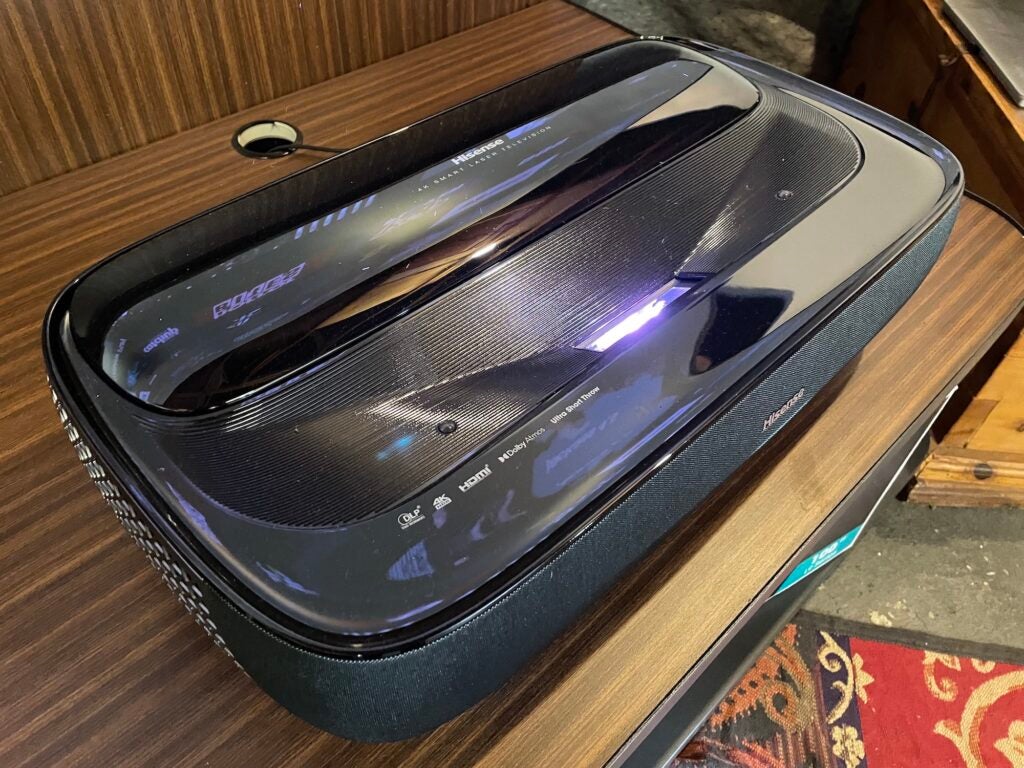
In truth, of course, the source of these pictures is actually the tri-chroma/triple-laser projector sitting on your sideboard beneath the screen. This can sit just centimetres from your wall or screen, rather than having to take over the middle of your room like most regular projectors, thanks to its ultra short throw (UST) technology.
This UST design, together with the intensely bright triple-laser lighting system and specialist screen, means the 100L9GTUK will also hopefully be bright enough to “punch through” ambient light more successfully than regular projectors, meaning you won’t have to swathe your living room in perpetual darkness to enjoy it.
Once you actually notice the 100L9GTUK’s projector component, though, you’ll see that it’s bigger than typical home entertainment projectors. This is down to the need to bounce its laser-created images around a series of internal magnification optics so that an image can emerge from a slit in its top edge, ready to fill the 100-inch screen sitting just centimetres away.
The 100L9GTUK wears its size well, though, sporting a glossy black finish, tastefully rounded corners – and the provision of a fabric-covered 40W speaker system on the edge that faces into your room.
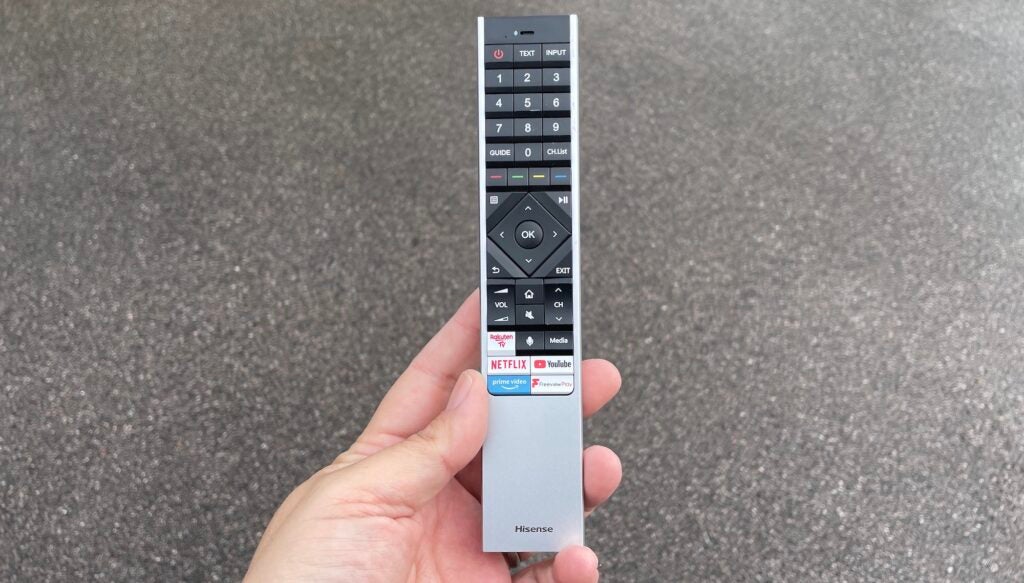
Connections reside on the side of the projector that sits closest to the wall, making it relatively easy to hide cable spaghetti.
The 100L9GTUK is controlled by a premium version of Hisense’s TV remote controls – another way in which it seeks to cross the great projector/TV divide.
Features
- Claimed 4K resolution
- Tri-laser ultra short throw projector
- Ships with 100-inch solid, ALR screen
The 100L9GTUK’s headline feature is simply the way the projector/screen combi tries to deliver a TV-like experience at a scale that would cost many times more if it was actually a TV.
Hisense really has gone the extra mile in its bid to realise this ambition. For starters, the tri-laser lighting system can pump out a massive 3000 lumens of peak light. Experience suggests that these sorts of light levels are what you need if you want your projector to deliver pictures that remain punchy and watchable in typically bright living room conditions.
Moreover, the Ambient Light Rejecting screen design is expressly designed to deliver as much impact as possible from this 3000 lumens, thanks to a structure that reflects only light coming from below it, where the projector is. It shuts out reflections from any other light sources that might be around your room.
What’s more, the screen’s solid, layered structure is specifically designed to bounce as much light right back out from the projector as possible, rather than soaking any of it up or scattering it too widely.
As previously noted, the 100L9GTUK also carries a 40W speaker system – which, on paper at least, is more powerful than that of most TVs, never mind the puny audio efforts found accompanying the vast majority of “regular” projectors. This speaker system is even partnered with Dolby Atmos playback.
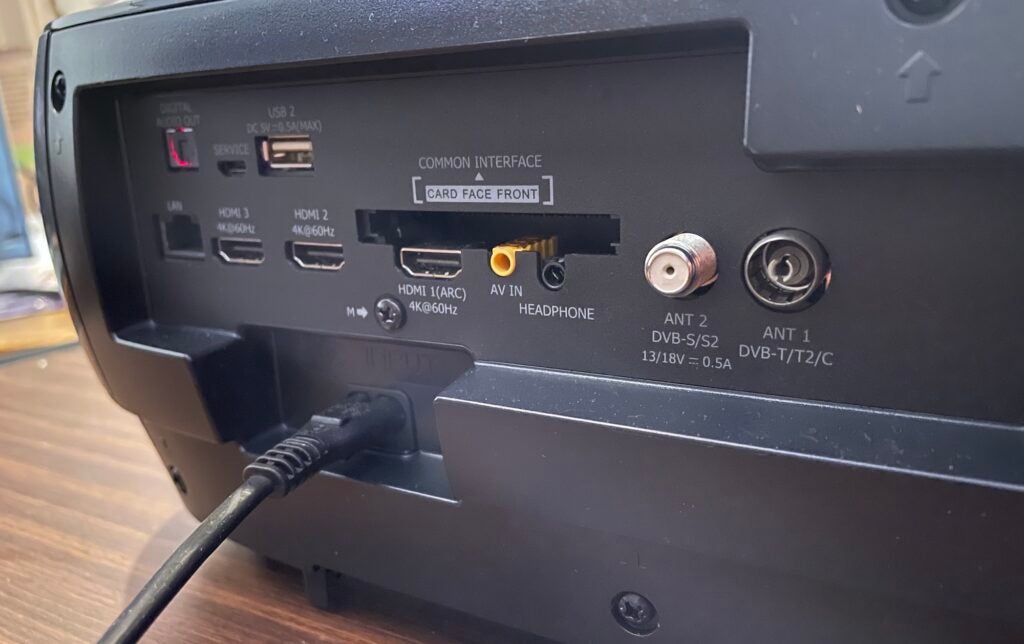
Then there are the 100L9GTUK’s connections. These include three HDMI ports rather than the two you’re usually limited to with projectors; built-in Wi-Fi, so you can use video streaming services; and even an RF tuner input, which, in the UK, supports Freeview HD broadcasts.
These are all connection options you’d routinely find on a TV; but they’re seriously rare to find on a projector.
It’s perhaps a pity that none of the 100L9GTUK’s HDMIs can support the 4K/120Hz or variable refresh rate gaming features that most premium TVs have finally started to handle. Support for these features is seldom found on other projectors either – but this is a projector system that self-identifies as a TV, after all. It’s worth adding here that the lowest input lag figure I was able to get from the 100L9GTUK was 63ms. This is fairly high by today’s standards, underlining that the current Laser TV generation hasn’t been made with a particular focus on gamers.
The 100L9GTUK claims to be a 4K projector. I say “claims” since as with most “4K” projectors, this one doesn’t actually sport a native 4K count of DLP mirrors. Instead, it uses Texas Instruments’ system of flashing its DLP mirrors multiple times per image frame to create a 4K effect.
Before you start thinking that this sounds somewhat sleight of hand, experience shows that this approach can deliver impressive results. So much so, that it’s actually considered by the Consumer Technology Association in the US to be a genuine 4K experience.
Also present and correct is HDR support, in the HDR10 and HLG formats; the 100L9GTUK does fall slightly short of many TVs by not supporting the premium HDR10+ and/or Dolby Vision HDR formats. However, as a reminder of the way this product straddles two product areas, Dolby Vision and HDR10+ support on projectors is extremely rare.
The 100L9GTUK’s use of a three-laser lighting system warrants more attention. The idea of using three lasers, one each for the red, green and blue picture elements, is that it can deliver more brightness and a wider, purer colour range – Hisense startlingly claims 107% of the HDR Rec 2020 standard. This is because there’s no need to deploy the colour wheel associated with single DLP light sources. These benefits should again prove helpful in trying to deliver a punchy, TV-like experience, even in fairly bright rooms.
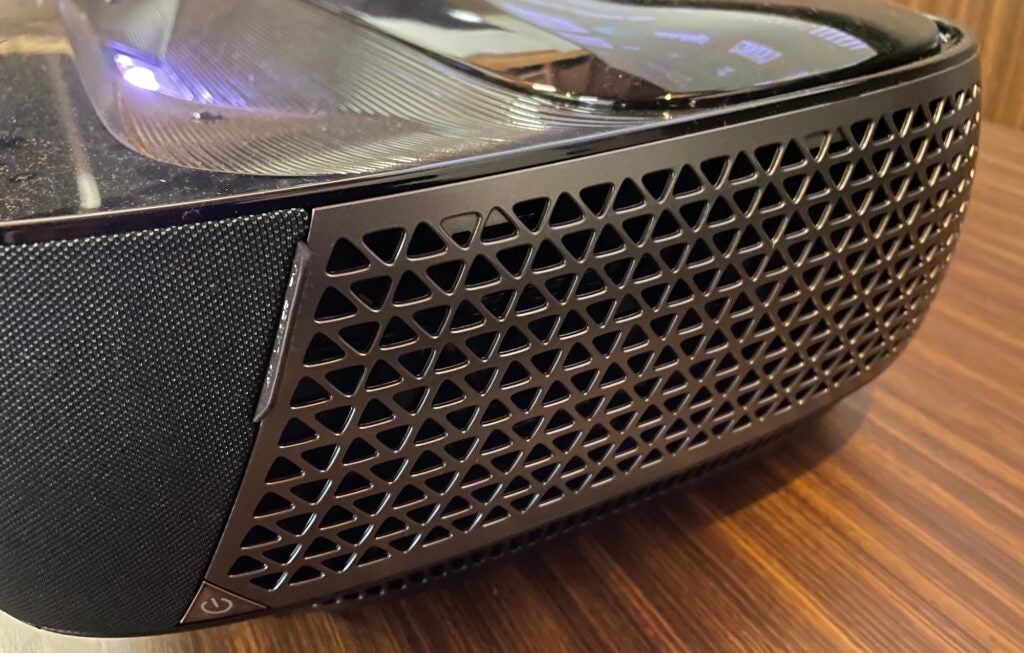
Using laser lighting also helps create a more TV-like experience, because you don’t have to worry about changing a bulb every few thousand hours as you would with a traditional lamp projector. The 100L9GTUK’s laser array is rated as being good for upwards of 20,000 hours of effective use, with the pictures it produces deteriorating over that time far more slowly than with lamp sources.
One last feature that pushes the 100L9GTUK back towards the TV category is its built-in smart system, built around the same VIDAA platform found in many Hisense TVs. As such, it’s easy to use, reasonably easy on the eye and, most importantly, provides access to most of the big streaming services consumers now expect to find on a TV. At the time of writing there are no Apple TV+ or Disney+ apps, but apparently these are set to arrive on Hisense’s L9G Laser TV models via firmware update very soon.
Picture Quality
- Remarkably bright and colourful
- Excellent 4K sharpness
- Hot spot
The 100L9GTUK really does get closer to delivering a TV-like experience than any other projector system I’ve seen. Not least because the intense luminance of the laser light system combines with the highly reflective and ambient light-rejecting properties of the provided screen to produce pictures so bright, it’s hard to believe they’re coming from a projector at all.
Obviously, this brightness has most impact in a fairly dark room, where HDR images erupt off the screen with levels of intensity that you’d normally only see from a pretty high-end LCD TV. Arguably more important, though, given the 100L9GTUK’s living room ambitions, is the way the extreme brightness helps its pictures hold their own against even quite high amounts of ambient light.
Accompanying the extreme brightness are some spectacularly rich and punchy colours. Again, these are at their most dramatic in a dark room. However, having such an intense baseline means they also hold up uniquely well for a projector system in a regular living room environment.
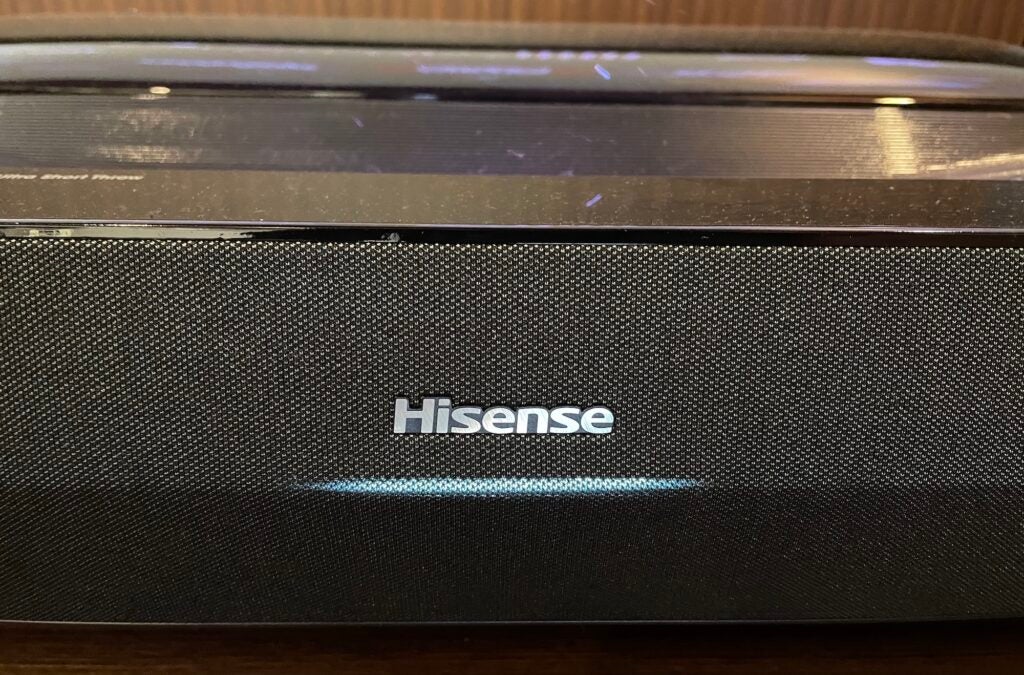
Put the 100L9GTUK’s extreme brightness and colour handling together and you have the most impressive attempt to maintain a sense of HDR, even in a regularly lit room, that I’ve seen to date.
I’m not saying the 100L9GTUK’s pictures aren’t affected at all by ambient light. Inevitably, even with a projector as bright, and equipped with such a short throw distance, ambient light will dilute the image to some extent, reducing the intensity of colours and brightness, and washing out contrast.
But while it’s true that a TV wouldn’t be as affected by ambient light (so long as a direct light source wasn’t shining directly at its screen, anyway), the extent to which the 100L9GTUK’s images lose intensity in bright rooms is far less problematic than you’d expect to see with any other all-in-one projector package.
The 100L9GTUK also excels with sharpness and detail. Feed it a good 4K source and it will serve up pictures that look 4K. Detail levels are high, clarity is excellent, and there’s enough subtle texture to be seen – even in the most heavily saturated colour areas – to create that sense of realism and three-dimensionality that’s so important to ‘selling’ a 4K experience.
Of course, having so much detail available is particularly helpful when you’re watching on a 100-inch screen. And the 100L9GTUK’s upscaling of HD sources to 4K is effective for such an affordable system.
While the 100L9GTUK is at its best when in an environment with only a degree of ambient light, in some ways it also turns its hand to dark-room performance better than many rival “bright room” projectors. Not least because the sheer intensity of the bright parts of its pictures does an unusually effective job of drawing attention away from the projector’s inevitable limitations for black levels and contrast.
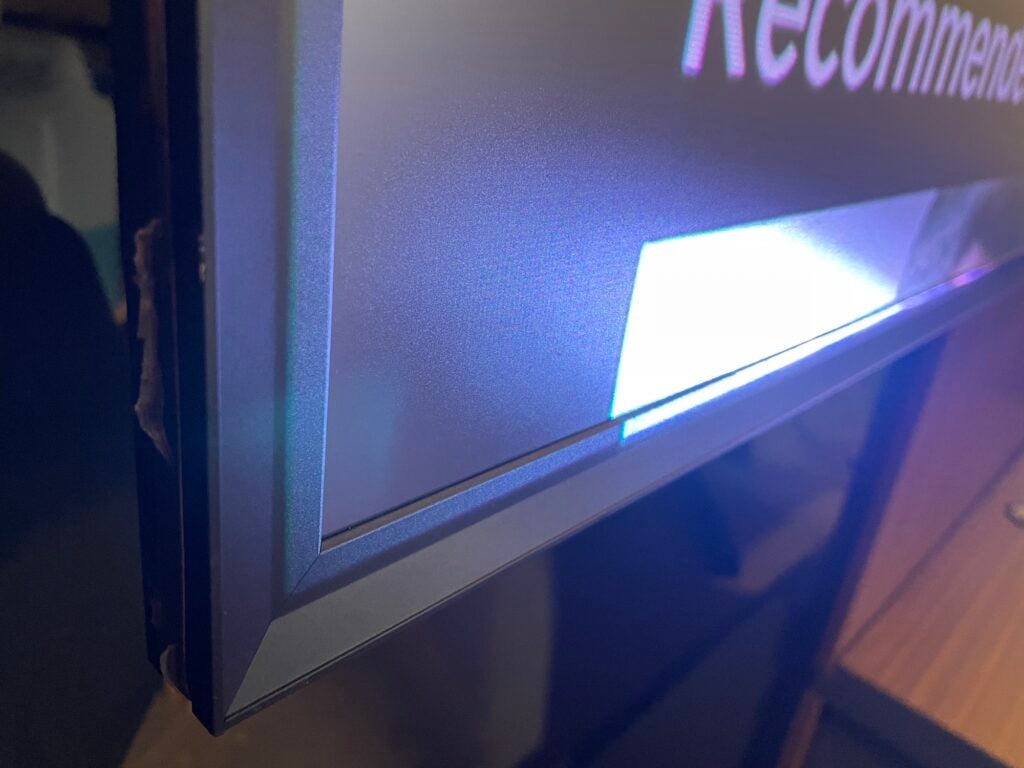
That said, there are issues in dark rooms that I can’t ignore. As I’ve just noted, while you don’t notice this in a bright room, black levels are barely average. Dark scenes look rather grey where they should look black, which can also cause subtle details in dark areas to become lost.
Also more noticeable in dark rooms is that pictures lose brightness when viewed off-axis (a side effect of the structure of the 100L9GTUK’s ALR screen). In addition, low room lighting draws attention to a quite pronounced “hot spot” that sees much of the bottom third or so of the picture appearing with an area of excess, “accidental” light appearing over it.
The Adaptive Contrast feature that serves up the all-round punchiest pictures can cause a little instability in overall brightness levels in dark rooms, as it adjusts the projector’s light output to suit changes in the image.
Other more general issues are that despite the 100L9GTUK using a three-laser system, high-contrast images can show signs of the rainbow effect (where stripes of pure red, green and blue can flit over bright objects or your peripheral vision); skin tones occasionally look a little ripe; and motion looks a little uncomfortable with 24p movie sources. For most people (some viewers are unusually susceptible to seeing the rainbow effect), though, none of these issues will be a major distraction.
One other point to stress is that you need to use the 100L9GTUK’s Dynamic HDR picture preset to get the best results out of it. All the other settings go for a warmer colour tone that doesn’t marry well with the seemingly slightly more blue-biased natural tone of the laser lighting system.
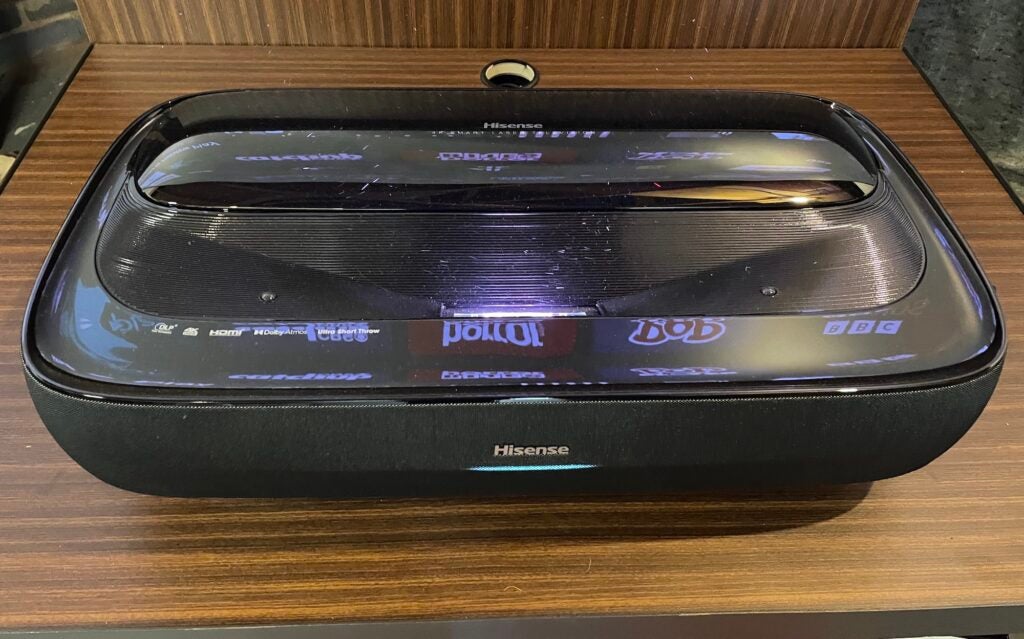
While the 100L9GTUK’s picture characteristics may be enough to deter serious home cinema fans, though, the key point about a product such as this is that its issues are all far less problematic when you’re watching the TV in the regular lighting conditions the majority of our TV-viewing life is spent.
Sound Quality
- Dolby Atmos support
- Forward-firing speakers
- Bass drop out
The 100L9GTUK’s speakers are good in some ways, a little disappointing in others. On the upside, the way they fire directly into your room gives the sound a more direct, impactful feel than you’d experience with many TVs, which tend to place their speakers behind the screen.
The 100L9GTUK’s audio is also in a different league to anything you might hear from the vast majority of projectors, in terms of both its scale and projection (the extent to which sound is thrown from the projector’s bodywork).
That said, sound projection here isn’t sufficient to do much justice to the built-in Dolby Atmos decoding, or make voices appear as if they’re coming from the king-sized images on the 100L9GTUK’s screen.
In addition, there’s a slightly thin tone to the sound, which can lead to dense soundtrack moments sounding a little brittle and artificial. It doesn’t help that bass is quite limited, too, distorting or dropping away almost completely with sustained heavy rumbles.
Overall, then, the 100L9GTUK’s sound can be considered better than that of almost all projectors, but only around average by premium TV standards.
Latest deals
Should you buy it?
Offers TV-like pictures It’s bright enough, colourful enough and well featured enough to deliver a strikingly TV-like experience at a fraction of the cost of an actual 100-inch TV.
A few dark room issues It doesn’t turn into a serious dark room home cinema projector as well as home cinema fans might like.
Final Thoughts
The 100L9GTUK won’t be for everyone. It isn’t as accomplished all-round in a bright room as a premium TV, and it isn’t as accomplished in a blacked-out room as a dedicated home cinema projector. However, it’s uniquely good at serving up cinema-sized pictures that you can watch in regular living room environments, without the hassle and lack of TV features typically associated with a projector.
And I suspect there’s actually a pretty sizeable market of people out there for whom such a mixture of size, features and screen inches for the money will be just what the doctor ordered.
How we test
We test every projector we review thoroughly over an extended period of time. We use industry standard tests to compare features properly. We’ll always tell you what we find. We never, ever, accept money to review a product.
Find out more about how we test in our ethics policy.
Test for more than a week
Tested with real world use
FAQs
As defined by Hisense, it’s a combination of a high-brightness laser projector with an ambient light-rejecting screen.
It will allow 4K gaming at 60Hz, but there’s no variable refresh rate or 4K/120Hz support. Input lag is 63ms at best.
Yes, it carries Hisense’s VIDAA smart system, which provides access to many video streaming apps. Apple TV+ and Disney+ weren’t present when we published this review, but are expected to be added soon via firmware update.






